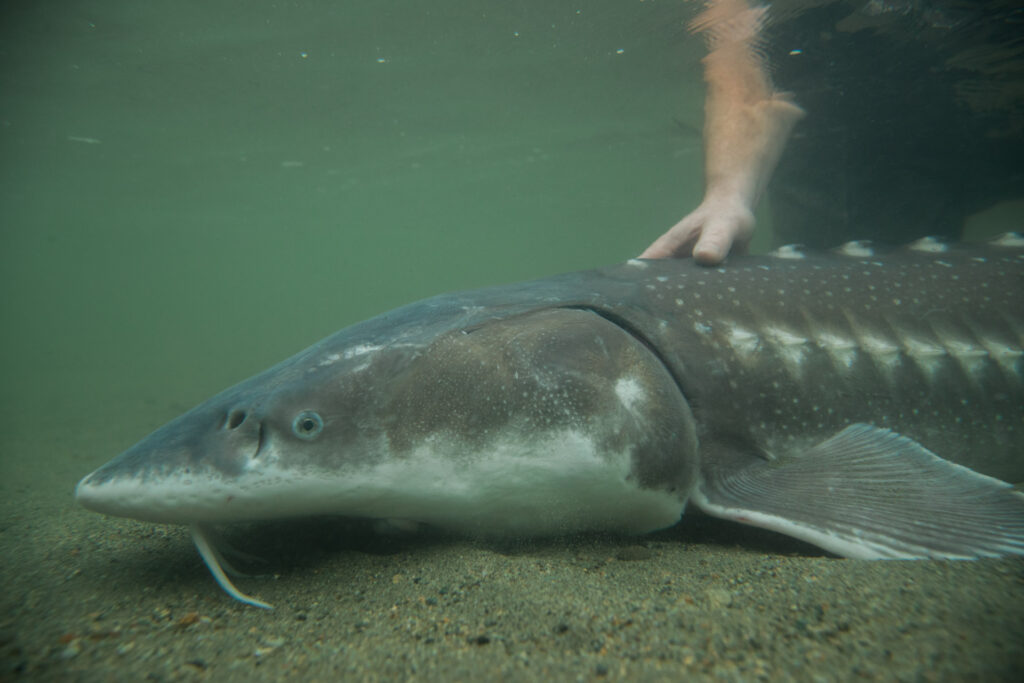Origin: The white sturgeon (Acipenser transmontanus) is the largest and longest-lived freshwater fish in B.C. The Society operates conservation hatchery programs to preserve populations, and bolster the numbers of juveniles. Each spring, mature fish are caught and live-spawned, with the eggs fertilized from each female. After spawning, the parent fish are released unharmed back where they had been caught.
Habitat: Adult white sturgeon live in deep, fast waters and spend the majority of their time on the bottom of large rivers or lakes. White sturgeon are bottom feeders. Due to their poor eyesight, sturgeon use their barbels (whisker-like feelers) to locate prey. Small sturgeon will often eat chironomids and aquatic invertebrates. Adult sturgeon eat fish, and are known for following a salmon run up the river.
Description: White sturgeon can grow up to six metres in length, and live over 100 years. Like sharks and rays, sturgeon have cartilaginous, not bony, skeletons. Their appearance has remained largely unchanged over the last 175 million years. They have a long, cylindrical body, toothless mouth, large pectoral fins, a heterocercal tail (with upper and lower halves of different sizes), and armour-like, bony plates along the back and sides. While white sturgeon have relatively poor eyesight, they have a highly developed sensory system to detect prey in large turbid rivers.
Fishing: There are six populations of white sturgeon in Canada. These include the Lower Fraser, Middle Fraser, Upper Fraser, Kootenay, Upper Columbia, and Nechako populations. Under Canada’s Species at Risk Act, four of these endangered populations are closed to all recreational fishing. Recreational fishing has been strictly catch-and-release since 1994 on the Fraser and in the Thompson-Nicola region.
